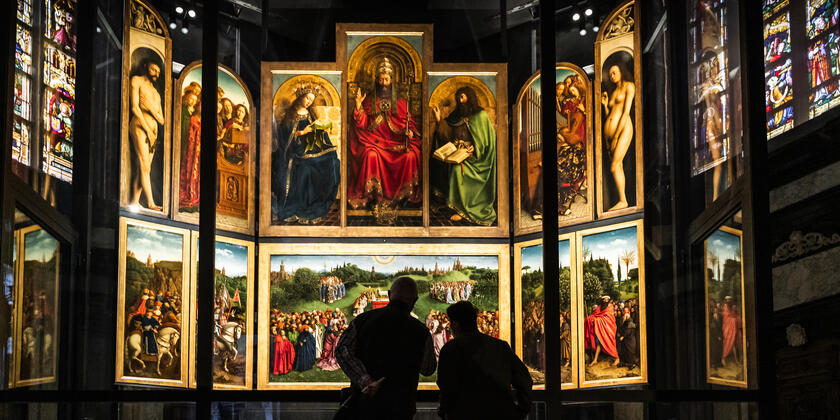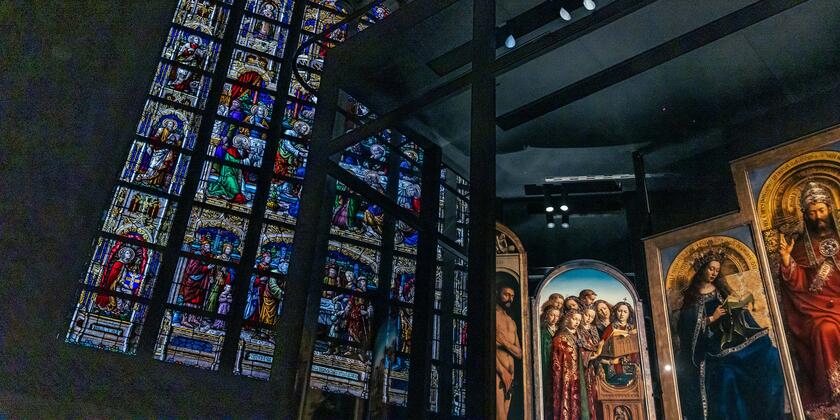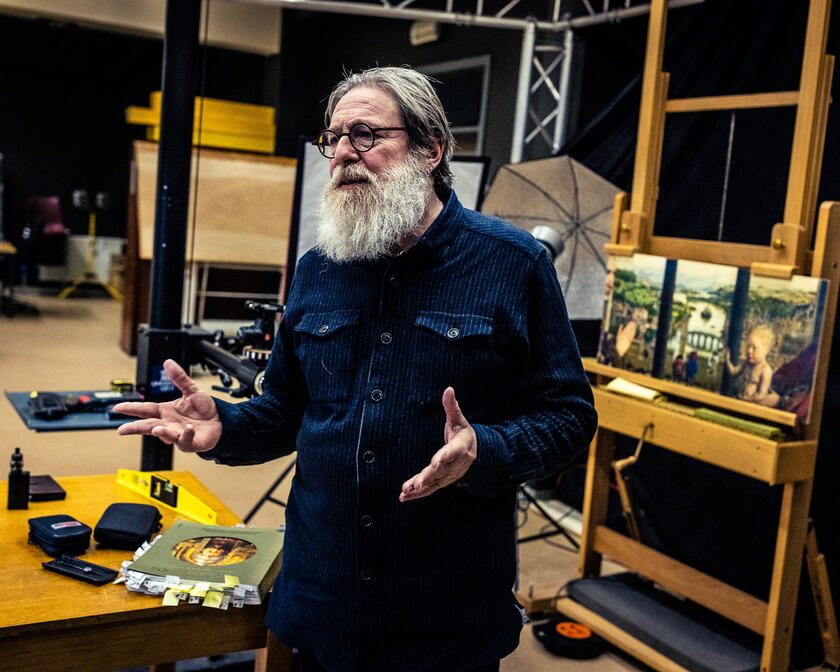
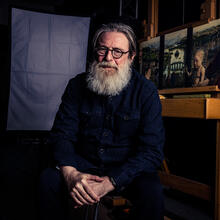
In 2010, we began the preliminary studies, and in 2012, we began the restoration of the altarpiece. We, the experts, were amazed by the amount of alterations that had been made after Van Eyck. As a matter of fact, we have discovered a lot thanks to new technology that enables us to examine the layers and the chemical composition of the painting on a microscopic level. So the question remains: why?
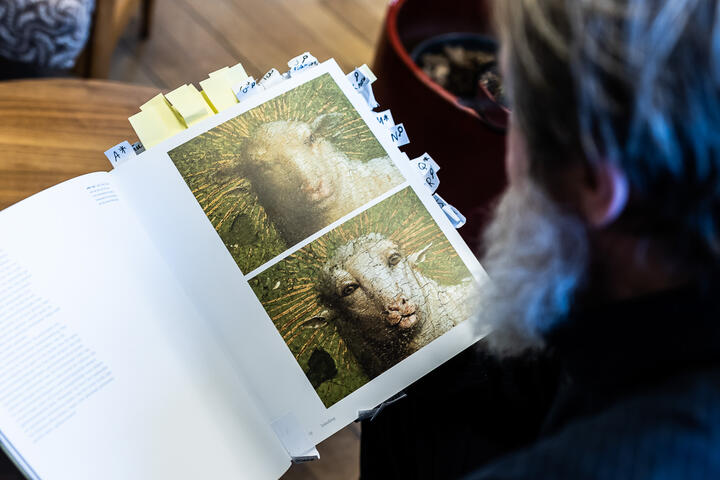
We had known since the 1950s that something was not right with the lamb. The two original ears had already been revealed during the previous restoration round under the supervision of Albert Philippot. Suddenly, the lamb had four ears.
A touch of paint — or more
Reason number one: damage repair. Whenever some of the paint in a robe, for instance, was damaged, they did not use a stereo microscope to carefully restore that section one square centimetre at a time like we do today. They repaired the damage by painting a new robe. You could compare it to trying to paint over a hole in a wall in the right tone. It’s much easier if you repaint the whole surface.
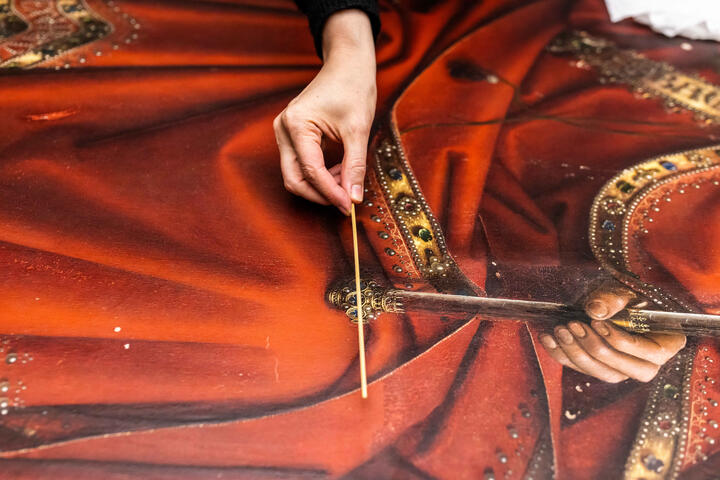
Reason number two: visibility. Van Eyck used oil-based varnish, but it quickly darkens. In the sparsely lit Vijd chapel, the Ghent Altarpiece must have been less clearly visible by 1550. That’s probably why the restorers tended to paint the accents more sharply, for instance with the white accents in Joos Vijd’s hand. Such interventions enhanced the painting’s legibility. You could compare it to a contrast filter on Instagram.
When the word ‘restoration’ did not yet exist
Reason number three: changes in taste. Now we are on dangerous ground. For instance, one of the sibyls’ robes was changed from pink to white, and we are not sure why. Perhaps it was nothing more than an aesthetic choice. Nowadays, we cannot imagine doing such a thing, but the preservation of valuable heritage was not an issue back then. That is probably also why the lamb’s face was altered.
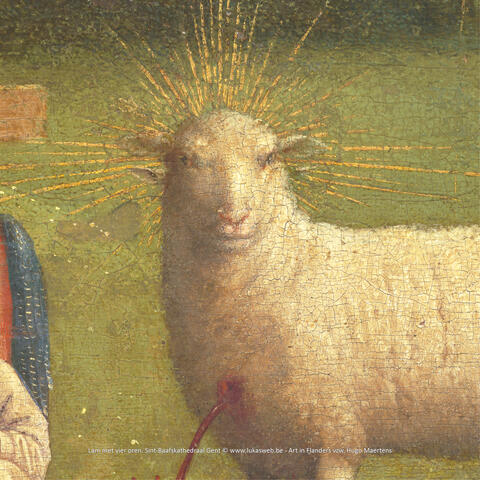
We had known since the 1950s that something was not right with the lamb. The two original ears had already been revealed during the previous restoration round under the supervision of Albert Philippot. Suddenly, the lamb had four ears. We therefore already knew that an older head was hidden under a more recent one, but it wasn’t revealed until the current restoration campaign. And the lamb’s face was totally different. Van Eyck’s lamb seems to be a hybrid creature that’s half ovine and half human. It has given rise to a great deal of controversy and online memes.
Christ looks deep into our eyes
Honestly? We were also surprised. But the most adequate and spontaneous answer came from canon Collin. His first impression was: Christ is looking me in the eye. And that is the essence. With its almost human face, the lamb’s intent, commanding gaze is that of a man who sacrificed himself for humanity. From a purely Christian and devotional point of view, it is a very strong image.
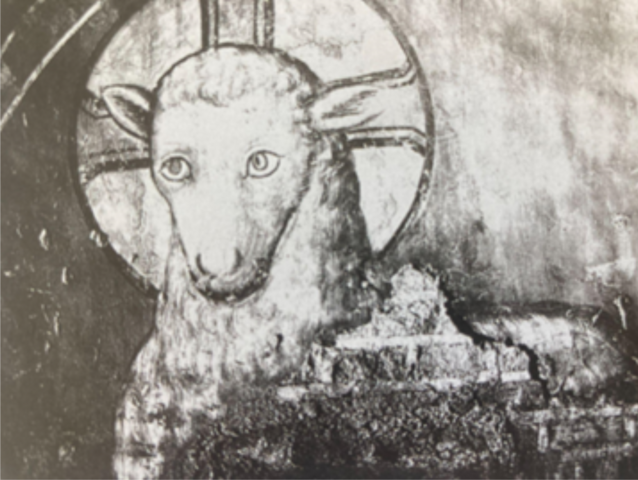
The face is also less strange when you consider it as part of the tradition. You can even find sheep with anthropomorphic traits in early Christian mosaics from Rome and Ravenna. It is an artistic tradition that was already a thousand years old at the time and which Van Eyck had come to know from his travels. Although we do not have any hard evidence, it is possible that this anthropomorphic representation had fallen out of fashion in the century after Van Eyck’s death, when the lamb was overpainted.
Was a human-like sheep inappropriate?
During the Council of Trent in the 1550s, ‘decorum’ was a hot topic among theologians. What was the most respectful manner of representing Christ and the Virgin Mary, for instance? A long list of rules was drawn up. I have not yet found any texts stating that a human-like head was not according to the rules, but I can imagine that in this context, the lamb was viewed with critical eyes. And maybe it was considered inappropriate.
Is there still room for doubt? Yes there is, but the fact that is was painted over is beyond doubt. Whether you like it or not, what we now see is the lamb painted by Jan Van Eyck. We know this because of the oxidation of intermediate layers of varnish and cracks in the paint that were painted over later on. These elements prove that there was more than a century between both versions, so it is impossible that it was an original by Hubert that was painted over by Jan. It is not a question of taste, but of science.
Maximiliaan Martens
Maximiliaan Martens is professor of Art History at Ghent University and is a world-renowned expert on Van Eyck. Since 2010, he has been heavily involved in the restoration of the Ghent Altarpiece and the expo Van Eyck. An Optical Revolution. He is still fascinated by the topic that interested him in his student days: how can technology and scientific research help us shed new light on the old masters?

